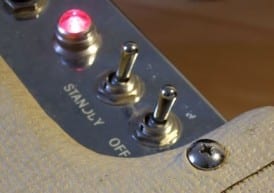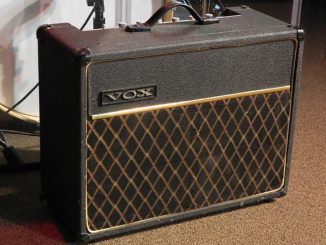 To get the most out of your tube amp, which can be a hefty investment, here are some easy to follow handling and maintenance tips. There’s no arguing that tube amps still set the standard for tone – modern solid state and digital amps merely emulate the tube amps of the past. The unfortunate drawback however, is that tube amps are more expensive and fragile compared to solid state alternatives. Repairs and maintenance add to the already high costs of tube amps. Thankfully, some of these extra expenses can be avoided with proper care and maintenance.
To get the most out of your tube amp, which can be a hefty investment, here are some easy to follow handling and maintenance tips. There’s no arguing that tube amps still set the standard for tone – modern solid state and digital amps merely emulate the tube amps of the past. The unfortunate drawback however, is that tube amps are more expensive and fragile compared to solid state alternatives. Repairs and maintenance add to the already high costs of tube amps. Thankfully, some of these extra expenses can be avoided with proper care and maintenance.
Don’t Be A Dumbass – Handle with Care
The most important and often neglected way to save on repair expenses is proper handling. Vintage/old tube amps require extra careful handling, and are best kept in your personal studio in a spot where it will rarely move around. Thankfully most of the popular modern tube amps like these are more robust and able to handle the rigors of regular gigs. Still you should be careful not to excessively shake or drop the amp because the tube and the sockets are usually the first to break. During transport, drive carefully and avoid pot holes and other road obstructions that might shake your amp too much. During performance, don’t kick your tube amp… unless it’s part of your band’s on-stage antics and you have the dough to take care of any damage.
Avoid Extremes
Another critical handling tip: Avoid using it at venues that are too wet or too cold! Getting the exterior and cabinet of the amp wet by itself will cause problems such as: adversely affecting the look of your baby and by consequence, the resale value if you upgrade and find yourself with a better baby. I know it’s obvious but Please don’t get the inside of the amp wet – as it may cause major damage to the amp or worse get you electrocuted. Basically, don’t play on an open stage on a rainy day, and your beer goes in your belly not on top of your precious amplifier.
If you have to begrudgingly bring your amp to a location that is cold, don’t immediately plug-in and play after unloading. Give her some time to warm up! Preferably to room temperature before turning it on. The same is also true after turning off the amplifier. Get in more face time with your fans while letting your amp cool down before you pack it for transport – two birds, one stone. Let’s not forget about condensation build-up. This may occur when the amp is exposed to sudden temperature changes. This can be a serious bitch so prevent it if possible.
Standby
 Although the amount of standby time that is required before you start to play is debatable, putting your tube amp on standby mode will always benefit you. The generally accepted standby time is 1 minute which may increase or decrease depending on how late your gig is or how cold the weather happens to be.
Although the amount of standby time that is required before you start to play is debatable, putting your tube amp on standby mode will always benefit you. The generally accepted standby time is 1 minute which may increase or decrease depending on how late your gig is or how cold the weather happens to be.
Note that some modern tube amps don’t even require standby because the tubes warm up at the same time as the rectifier which is awesome! Just make sure you don’t immediately play loud after turning your amp on and you should be fine. Still, for those that have standby switches, you might as well make full use of it, since you shelled out the bucks for the switch anyway. Since hot tubes are more prone to shock damage, always allow the tubes to cool down before transporting your amplifier.
Valve Replacements
The general opinion sways in favor of changing your poweramp section tubes every year. Obviously, this may vary depending on how hard you drive your amp and how much time you spend on your amp. The preamp tubes on the other hand, last longer because they aren’t used as much. Typical methods for checking the tubes include:
- Use your ear to monitor tone inconsistencies, dropping volumes, unwanted pops and noise.
- Or you can get a tube tester like the VT1000 from Orange Amps.
- Also visually inspect the tube for coloration. (They turn white when they lose their vaccum.)
- Best case scenario: you’re a lucky bastard and have a technician on call that can inspect the tubes.
Honestly, having backup tubes is as critical as your spare strings. To avoid complications, it’s best practice to replace your output tubes as a set, using spares from the same maker of your original tubes. Utilizing other types of tubes requires rebiasing that can only be done by experienced technicians and amp owners which = $$$.
Tube amps may seem fragile, but with proper care, they can give you a lifetime’s worth of great tone.
These amp tips are brought to you by GuitarSite.com




![Randall RM100KH MTS Review [Kirk Hammett Signature Guitar Amplifier] 6 randall rm100kh mts kirk hammett guitar amp review](https://gear-vault.com/wp-content/uploads/2011/12/randall-rm100kh-mts-kirk-hammett-guitar-amp-review-326x245.jpg)
Valve on tube amp is the part that is fragile. But I love the sound of tube amp.